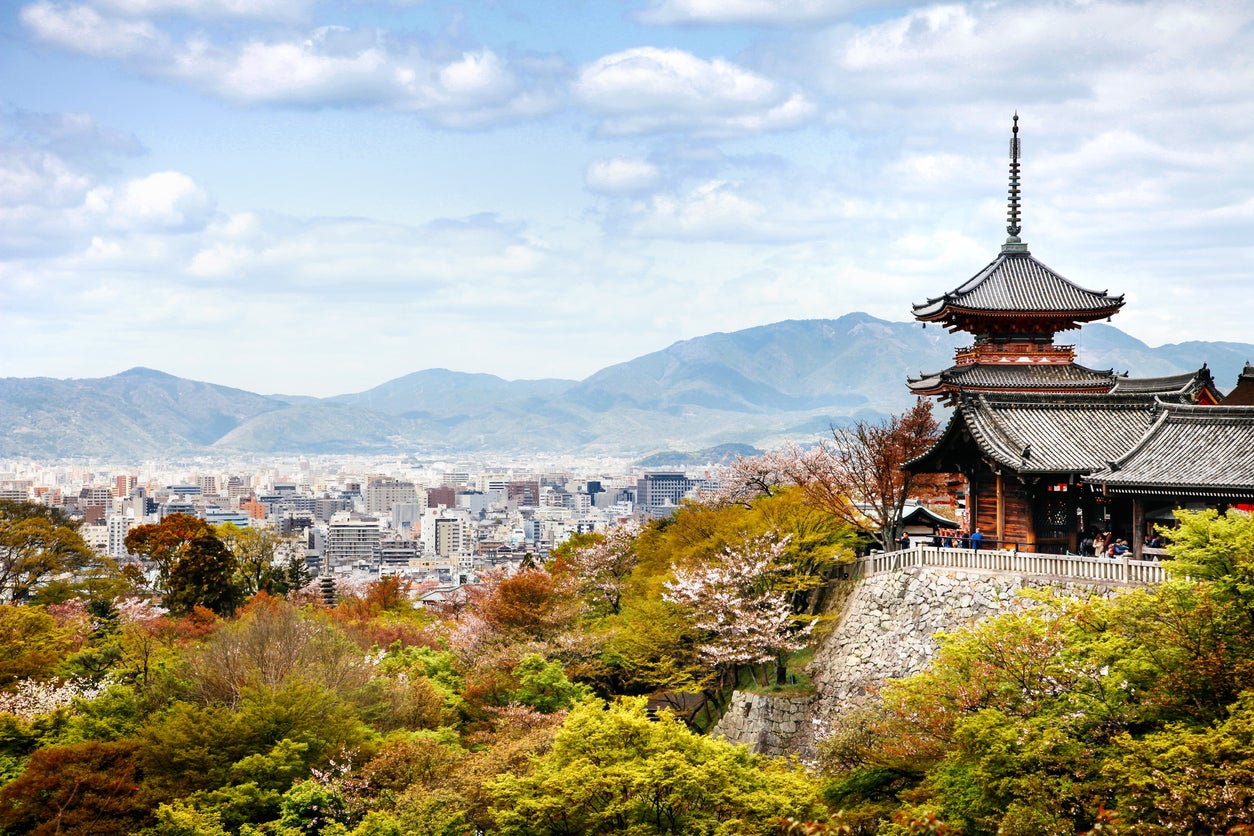Is Kyoto the next destination to fall victim to overtourism?
Locals have set up a ‘scenery preservation’ committee to tackle tourists’ bad behaviour

Your support helps us to tell the story
From reproductive rights to climate change to Big Tech, The Independent is on the ground when the story is developing. Whether it's investigating the financials of Elon Musk's pro-Trump PAC or producing our latest documentary, 'The A Word', which shines a light on the American women fighting for reproductive rights, we know how important it is to parse out the facts from the messaging.
At such a critical moment in US history, we need reporters on the ground. Your donation allows us to keep sending journalists to speak to both sides of the story.
The Independent is trusted by Americans across the entire political spectrum. And unlike many other quality news outlets, we choose not to lock Americans out of our reporting and analysis with paywalls. We believe quality journalism should be available to everyone, paid for by those who can afford it.
Your support makes all the difference.Kyoto, Japan’s crown jewel of tourism, could be the next destination to become a victim of its own success.
Residents and business owners in the city’s Gion-Shinbashi district have joined together to form a “scenery preservation” committee to combat issues brought on by overtourism, including “half-naked hikers, trespassing travellers and prolonged photo shoots”, according to Japanese newspaper The Asahi Shimbun.
The group has signed a memorandum demanding better behaviour from tourists. “If no countermeasures are taken, the elegant view of Gion will be spoiled,” said Kanji Tomita, vice representative of the group.
Their campaign specifically targets enthusiastic selfie-takers, suggesting they spend less time posing, and people who strip off in public.
It follows the Kyoto Convention and Visitors Bureau’s “etiquette manual”, which advises visitors not to hassle geishas, cycle while drunk, take their own food and drink to a restaurant or touch old buildings and objects.
The city’s tourist board and the Japanese government have also recognised the problems caused by the influx of tourists, who come in droves to see the cherry blossom trees, Arashiyama Bamboo Grove, temples, shrines and geishas.
The Kyoto tourist board is employing several strategies to ease overcrowding, including opening attractions earlier and encouraging early morning excursions, promoting lesser known districts and positioning the city as a year-round destination.
“The key is to disperse crowds in crowded times, crowded areas or crowded seasons,” Kyoto Mayor Daisaku Kadokawa told Japanese public broadcaster NHK in early October.
The Japan Tourism Agency has highlighted the issue further by introducing a survey into the effects of overtourism in a bid to find ways visitors and locals can peacefully coexist.
The estimated number of foreign visitors to Japan from January to June rose by 15.6 per cent in 2018 to 15.89 million, a record for the first half of the year according to the Japan Tourism Agency.
China accounted for the largest number of foreign tourists, with 4.05 million visiting in the first half of the year, up 23.6 percent.
Kyoto is far from the first city to encounter issues due to its popularity. Venice segregated tourists and locals using gates at particularly busy points over the summer and recently imposed a €500 fine for tourists sitting down in non-designated spots, while just this month it was announced that Maya Bay, which featured in film The Beach, will be closed until further notice due to damage caused by overtourism.
Join our commenting forum
Join thought-provoking conversations, follow other Independent readers and see their replies
Comments